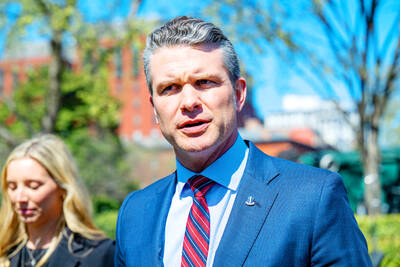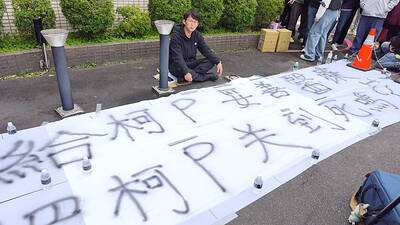Six new patrol cutters are to be built after the Coast Guard Administration received approval to build the 3,000-tonne displacement vessels, an official said yesterday.
The Cabinet in July approved the coast guard’s NT$12.9 billion (US$460.27 million) plan to build the ships, which are to be used in exercises with the US coast guard alongside normal duties, the official said on condition of anonymity.
The ships are to be substantially larger and more capable than the biggest cutters the coast guard currently has in service: the Hsun Hu No. 8 and the Hsun Hu No. 9, which are 1,000-tonne vessels, the official said.
The new ships are to augment the coast guard’s ability to carry out its mission and discharge its responsibilities under the Taiwan-US Memorandum of Understanding on Coast Guard Cooperation, which the two countries signed on March 25, they said.
Citing a video conference between the two nations’ coast guards on Aug. 11, the official said that the focus of the collaboration would be to facilitate joint maritime rescue and suppress illegal, unreported and unregulated fishing.
The overall goal of the cooperation is to enhance the joint capabilities of Taiwan and the US in responding to rising challenges at sea, they said.
The budget is separate from a NT$42.65 billion plan to procure several new coast guard patrol vessels, including four 4,000-tonne ships, five 1,000-tonne ships, 17 100-tonne cutters, 50 35-tonne-class patrol boats and 50 multipurpose coastal craft, the source said.
The 3,000-tonne program is to be implemented from next year to 2032, with bidding to begin next year, the official said, adding that the program would help sustain the defense-related ship-building sector.

The High Prosecutors’ Office yesterday withdrew an appeal against the acquittal of a former bank manager 22 years after his death, marking Taiwan’s first instance of prosecutors rendering posthumous justice to a wrongfully convicted defendant. Chu Ching-en (諸慶恩) — formerly a manager at the Taipei branch of BNP Paribas — was in 1999 accused by Weng Mao-chung (翁茂鍾), then-president of Chia Her Industrial Co, of forging a request for a fixed deposit of US$10 million by I-Hwa Industrial Co, a subsidiary of Chia Her, which was used as collateral. Chu was ruled not guilty in the first trial, but was found guilty

DEADLOCK: As the commission is unable to forum a quorum to review license renewal applications, the channel operators are not at fault and can air past their license date The National Communications Commission (NCC) yesterday said that the Public Television Service (PTS) and 36 other television and radio broadcasters could continue airing, despite the commission’s inability to meet a quorum to review their license renewal applications. The licenses of PTS and the other channels are set to expire between this month and June. The National Communications Commission Organization Act (國家通訊傳播委員會組織法) stipulates that the commission must meet the mandated quorum of four to hold a valid meeting. The seven-member commission currently has only three commissioners. “We have informed the channel operators of the progress we have made in reviewing their license renewal applications, and

‘DENIAL DEFENSE’: The US would increase its military presence with uncrewed ships, and submarines, while boosting defense in the Indo-Pacific, a Pete Hegseth memo said The US is reorienting its military strategy to focus primarily on deterring a potential Chinese invasion of Taiwan, a memo signed by US Secretary of Defense Pete Hegseth showed. The memo also called on Taiwan to increase its defense spending. The document, known as the “Interim National Defense Strategic Guidance,” was distributed this month and detailed the national defense plans of US President Donald Trump’s administration, an article in the Washington Post said on Saturday. It outlines how the US can prepare for a potential war with China and defend itself from threats in the “near abroad,” including Greenland and the Panama

Taiwan People’s Party (TPP) Chairman Huang Kuo-chang (黃國昌) yesterday appealed to the authorities to release former Taipei mayor Ko Wen-je (柯文哲) from pretrial detention amid conflicting reports about his health. The TPP at a news conference on Thursday said that Ko should be released to a hospital for treatment, adding that he has blood in his urine and had spells of pain and nausea followed by vomiting over the past three months. Hsieh Yen-yau (謝炎堯), a retired professor of internal medicine and Ko’s former teacher, said that Ko’s symptoms aligned with gallstones, kidney inflammation and potentially dangerous heart conditions. Ko, charged with